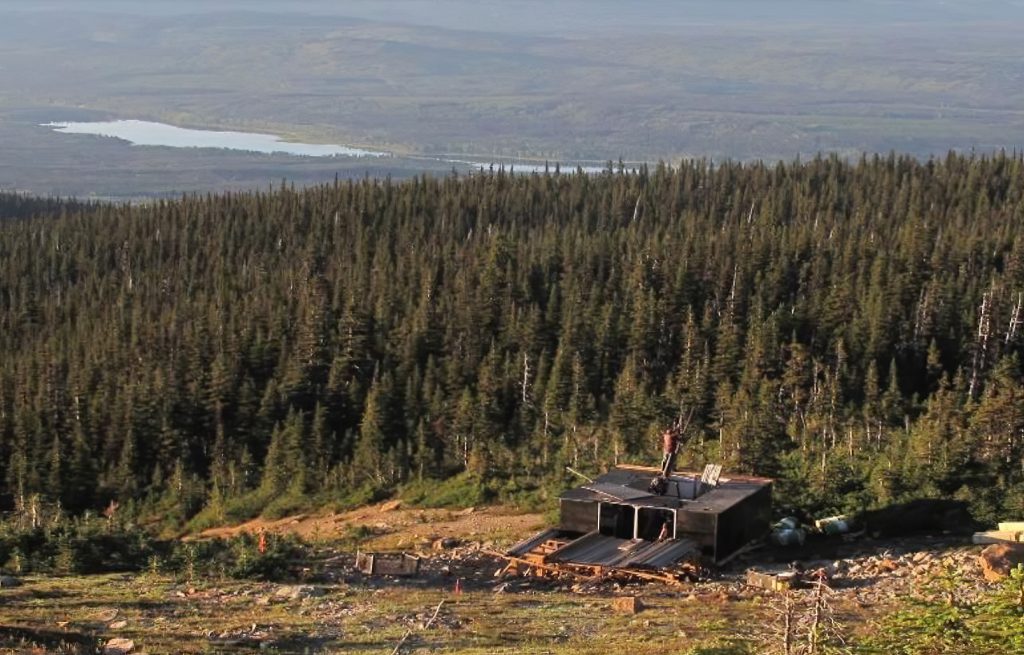FPX Nickel confirms new nickel discovery, British Columbia

FPX Nickel Corp. [FPX-TSXV; FPOCF-OTC] has confirmed a significant new nickel discovery from the maiden drilling program at the Van target in the 100%-owned company’s Decar nickel district, 90 km northwest of Fort St. James, central British Columbia.
The first two widely spaced holes at Van, located 6 km north of the Baptiste deposit, returned some of the strongest results in the district’s history, highlighted by the results of the first hole (21VAN-001), which intersected among the highest-grading broad intervals of near-surface nickel mineralization ever drilled at Decar.
The first two holes at Van show that the strong mineralization in previously reported outcrop samples continues to depth. Hole 21VAN-001 intersected 101 metres grading 0.150% DTR (Davis tube recoverable) nickel (0.207% total nickel), starting at an approximate vertical depth of 27 metres below surface, among the eight highest-grading, near-surface intervals in the history of Decar (see the associated table regarding vertical depth).
Hole 21VAN-002, collared 350 metres south-southwest along section from 21VAN-001, intersected 103 metres grading 0.144% DTR nickel (0.215% total nickel), starting at an approximate vertical depth of 55 metres below surface.
Nickel mineralization at Van occurs as disseminated awaruite (nickel-iron alloy) and in the same ophiolite host rocks as at Baptiste. The results of VAN-001 and VAN-002 compare favourably with previous drilling results at Baptiste, which contains 1,996 million tonnes of indicated resources at an average grade of 0.122% DTR nickel, plus 593 million tonnes of inferred resources with an average grade of 0.114% DTR nickel, both reported at a cut-off grade of 0.06% DTR nickel.
“We are extremely pleased with these first drill results from Van, confirming the potential for this target to host a large-scale, stand-alone nickel deposit to rival the deposit already delineated at Baptiste, which is the world’s third-largest undeveloped nickel deposit,” commented Martin Turenne, president and CEO. “For context, the results of 21VAN-001 exceed the highest-grading, near-surface results achieved in any of the first 38 holes drilled at Baptiste between 2010 and 2012. We look forward to reporting additional assays from this year’s nine-hole Van program in the coming weeks.”
FPX’s chairman Peter Bradshaw added, “While we are in still in the very early stages of understanding the potential at Van, the results of the first two holes, drilled in the central portion of the large 2.5-square-kilometre target area, strengthen our view that the Decar nickel district could host other large-scale deposits to support a district-scale, multigenerational nickel operation.”
The results of 21VAN-001 and 21VAN-002 are the first from a maiden nine-hole, 2,688-metre drill program at the Van target 6 km north of Baptiste at similar elevations, and accessible via logging roads. Maiden drilling at Van was designed to test the subsurface potential for mineralization in areas below and adjacent to prospective samples of outcropping bedrock, which had defined a target area of approximately 2.5 square kilometres. The size of the Van target defined by outcrop sampling is comparable with the Baptiste deposit, which measures 3 km along strike with widths of up to 1 km. All nine holes were drilled to the north-northeast at a declination of -50 degrees to a target depth of 350 metres.
